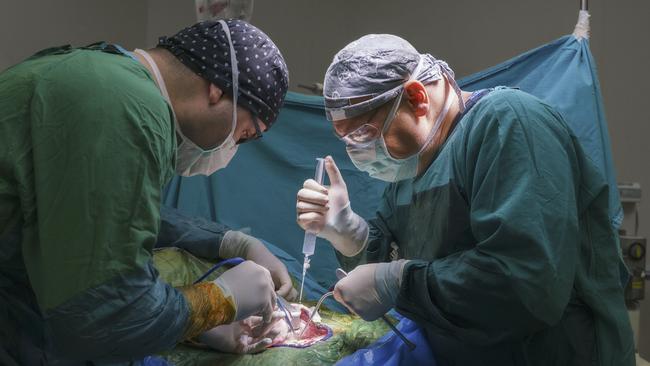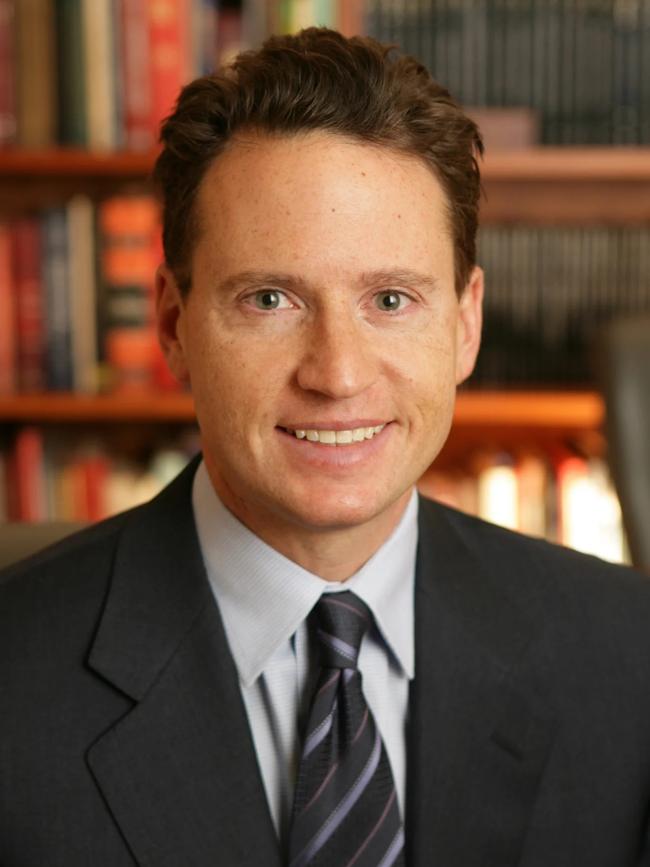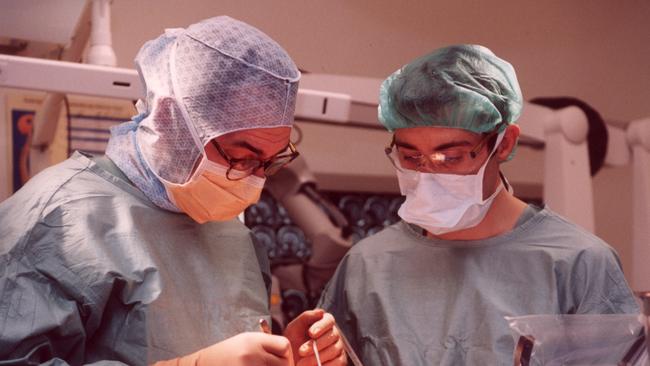What it’s like to remove a brain tumour
A neurosurgeon writes candidly about the moments that terrify him during surgery, and why he sometimes holds his breath.

You can now listen to The Australian's articles. Give us your feedback.
Most of the ships in a bottle you see in souvenir shops are built first, before being inserted into the bottle.
Imagine having to assemble the ship, piece by piece, by working through the neck of the bottle with the bottle intact.
That’s what it’s like to perform neurosurgery, a life-and-death technical exercise in which the surgeon must exert his or her will on the external world, working at the bottom of a deep, narrow corridor with a margin of error measured in millimetres.
The key to success relies not just upon a detailed understanding of the brain’s anatomy but also on careful preparation.
The analogy to a mountaineer is apt: The equipment is laid out in advance, every piece of gear is examined for weakness, and each step is rehearsed again and again until it becomes rote.
The night before a complex operation, I will often review a few textbook chapters, then revisit the anatomy to make sure I have a perfect mental vision of the upcoming assault on whatever summit I will be tackling the following day.
After a few hours of sleep, I often find myself staring up at the ceiling at 4am.
My internal alarm is unrelenting, telling my body to begin preparing for the day ahead.
At this early hour I am usually not thinking so much about the who of the operation. I focus more on the what and the how. While it may sound callous, I don’t want to be distracted by any emotional attachment that might cloud my judgment.
I knew one neurosurgeon, in fact, who refused to even look at his patients in the 24 hours leading up to their operations.
At the end of the day, while the doctor in me requires deep wells of empathy and heart, the surgeon in me must be able to turn off the heart and focus solely on one thing: flawless execution.

Operating deep in the brain, whether through a microscope or an endoscope, requires intense, sustained focus in which the eyes and hands must work together seamlessly.
No matter how much preparation you’ve done, until you are there, seeing the relationship between the tumour and the distorted anatomy, all bets are off. For this reason, the first move is always just to look around. You try to compare what you thought you were going to see with what you are seeing. Then you come up with a game plan – a blueprint for altering the anatomy to accomplish your goal.
To remove a tumour, you begin by making a series of minute finger movements to manipulate long, thin instruments whose sharp tips gently begin to dislodge the spaghetti-like nerves and hair-thin arteries from the tumour’s surface.
Some of these blood vessels are so threadlike, it would seem the red cells must pass through in single file.
As the tips of your instruments first brush up against the capsule of the mass, you give the beast its first poke and watch it rise from its slumber. Its bloodshot eyes slowly open as it prepares for the battle ahead.
You pause for a moment to see how it will react. Sometimes it starts as a slow ooze; sometimes it’s an eruption, as if you’ve angered the gods with your hubris. Just what do you think you are doing?
Either way, your focus shifts to controlling the bleeding, which you do by rolling your thumb over the teardrop-shaped opening in the suction to increase the aspiration. Too much force and those angel hair strands carrying the fuel of life will be damaged. Too little and the rising crimson tide will become overwhelming.
During critical movements, when the tips of the microscissors are cutting adhesions that attach small but crucial vessels to the walls of a tumour, I’ll take in a deep breath and hold it until the manoeuvre is accomplished. This control of my breathing allows me to minimise any tremor in my hands, as does bracing my wrists or my pinky or some part of the instrument I’m holding against a rigid structure, like the edge of the skull.
Operations unfold like a three-act play or a performance. The opening of the skull and the approach to the tumour are the set-up. The exposure of the pathology raises the stakes as the tension builds.
Inevitably, the complexity of the situation increases. It seems the villain is gaining the upper hand. The tumour may be firmer than anticipated, the anatomy more complex, the normal structures just too stuck to allow safe removal.
You may start to wonder whether the surgery is even feasible. Self-doubt may set in: Wait, maybe I chose the wrong approach?

Over time, an obstacle that appeared insurmountable is overcome, a corner is turned, and we reach the climax of the operation. As the stakes finally abate, it’s time to exhale.
The last move is to cauterise any small capillaries that may still be oozing and to evacuate any blood that may have pooled in secluded locations. At this point it’s time to close everything up and exit stage left. Sometimes I even take a bow.
A few of the most terrifying moments in brain surgery occur when we need to remove the bone overlying certain critical structures such as the carotid artery, which carries most of the blood supply to the brain, or the optic nerves, which transmit visual information from the eyes to the visual cortex. Each of these structures passes through a small canal encased in bone, which must be shaved away to expose the relevant anatomy.
The best way to remove this bone is with a power drill.
Shaving the eggshell-thick encasing away from a gossamer nerve or tenuous blood vessel with a two-millimeter ball-shaped diamond drill bit, rotating at 10,000rpm, requires a combination of practised skill, confidence and delicacy – not to mention constant irrigation with cold saline to minimise the heat created by the friction, which would otherwise cause thermal damage, even if the task were performed flawlessly. Ideally, we execute every move as we visualised it earlier. But what about when you’re working down a deep, narrow hole and you can see only partially that last tiny bit of tumour because it’s obscured by a small piece of bone, or by an unexpected artery that was too small to have been visible on the MRI?
Is it worth the risk to pull that last bit of the tumour out blindly, or do you leave it behind, knowing that it will only grow back and require yet another risky surgery in the future?
What if that last bit of tumour is stuck to another artery or a hidden nerve? Is it worth the risk of damaging those structures to get that last remaining piece? Decision after decision after decision, with so much on the line …
We try to make each determination objectively, but should these choices be the surgeon’s sole responsibility?
Well, yes and no. No, because it’s not my body, and if I make an error, I don’t suffer the consequences. In some sense, I have no right to make these kinds of decisions for someone else. And yet, who else can or will?
Ultimately, it comes down not to a simple yes or a no but to the plain fact that the decision is going to be made either by the tumour or by me. So better it be me. I must weigh the potential risks and benefits of each move and make the decision I would want made for myself if I were lying on that table.
THE WALL STREET JOURNAL
Theodore H. Schwartz is a neurosurgeon at Weill Cornell Medicine in New York. This essay is adapted from his new book, Gray Matters: A Biography of Brain Surgery, published by Dutton.

To join the conversation, please log in. Don't have an account? Register
Join the conversation, you are commenting as Logout